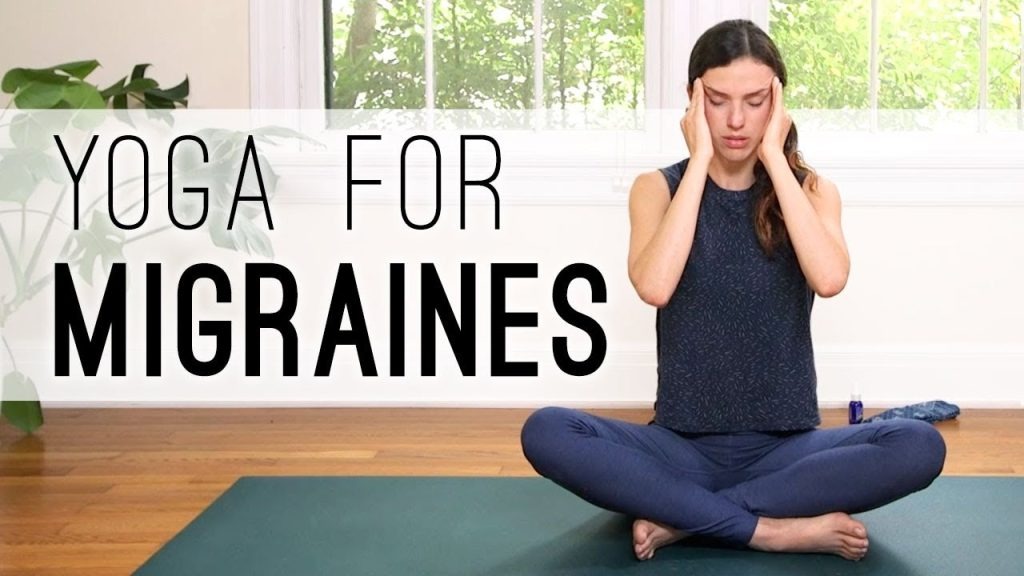Migraines are a debilitating neurological condition affecting millions of people worldwide. The excruciating pain, sensitivity to light and sound, and other associated symptoms can significantly disrupt daily life. As traditional treatments may not always provide complete relief, many individuals seek alternative approaches to manage their migraines effectively. One such approach gaining popularity is the use of yoga, a mind-body practice known for its calming and therapeutic benefits.
Understanding Migraines and Their Triggers
A. Definition of Migraines:
Migraines are a type of recurring headache characterized by intense, throbbing pain, usually on one side of the head. They are neurological in nature and often accompanied by other symptoms such as nausea, vomiting, sensitivity to light (photophobia), and sound (phonophobia). Migraines can last for hours to days and can significantly impact a person’s ability to function normally.
B. Differentiation from Regular Headaches:
It’s important to differentiate migraines from regular tension headaches, as they have distinct features. Unlike tension headaches, migraines are often more severe, have pulsating pain, and are aggravated by physical activity. Migraines also have specific phases, including prodrome (premonitory phase), aura (in some cases), headache phase, and postdrome (recovery phase).
C. Common Triggers for Migraines:
Migraines can be triggered by various factors, and identifying these triggers is crucial for effective management. Some common triggers include:
- Stress and emotional factors: Anxiety, tension, and emotional upheavals can precipitate migraines.
- Hormonal changes: Fluctuations in estrogen levels, often experienced during menstruation, pregnancy, or menopause, can trigger migraines in some individuals.
- Certain foods and beverages: Certain foods like aged cheeses, processed meats, caffeine, alcohol, and artificial sweeteners may trigger migraines.
- Lack of sleep or irregular sleep patterns: Poor sleep quality and inadequate rest can increase the likelihood of migraines.
- Sensory stimuli: Bright lights, loud noises, strong smells, and glaring screens can trigger migraines in sensitive individuals.
- Physical factors: Intense physical exertion, poor posture, and muscle tension can contribute to migraines.
The Role of Yoga in Migraine Relief
A. Principles of Yoga:
Yoga is an ancient practice that originated in India and has been passed down through generations as a holistic approach to health and well-being. The fundamental principles of yoga revolve around the integration of mind, body, and spirit. It combines physical postures (asanas), breath control (pranayama), meditation, and ethical guidelines to promote harmony and balance within the individual.
B. Addressing the Root Causes:
One of the key reasons yoga is effective in migraine relief is its ability to address the root causes of migraines rather than merely alleviating symptoms. By focusing on stress reduction, promoting relaxation, and addressing muscle tension, yoga can help mitigate the triggers and contributing factors of migraines.
C. Scientific Evidence:
Several scientific studies have investigated the impact of yoga on migraines, with promising results. Research suggests that regular yoga practice can lead to a reduction in both the frequency and intensity of migraines. The positive effects are believed to be linked to the modulation of the autonomic nervous system, stress reduction, and improved overall well-being.
D. Stress Reduction:
Chronic stress is a significant trigger for migraines. Yoga’s emphasis on relaxation techniques, mindfulness, and controlled breathing helps activate the parasympathetic nervous system, inducing a state of relaxation and countering the effects of stress hormones.
Key Yoga Poses and Practices for Migraine Relief
When practicing yoga for migraine relief, it is essential to focus on gentle and calming poses that promote relaxation and reduce tension. Here are some key yoga poses and practices that can be beneficial:
A. Gentle Neck Stretches and Shoulder Rolls:
- Neck Rolls: Sit or stand with a straight spine. Gently drop your right ear towards your right shoulder, then roll your chin to your chest, and bring your left ear towards your left shoulder. Repeat this circular motion several times, moving slowly and mindfully.
- Shoulder Rolls: In a comfortable seated or standing position, roll your shoulders forward and up, then back and down in a circular motion. Repeat this movement several times, allowing the tension to release from your shoulders.
B. Forward Bends and Supported Forward Bends:
- Standing Forward Bend (Uttanasana): Stand with feet hip-width apart, exhale, and fold forward from the hips. Allow your upper body to hang, and let your head and neck relax. Hold the pose for a few breaths, feeling the stretch in your hamstrings and lower back.
- Supported Forward Bend with a Chair: Sit on a chair with your feet flat on the floor. Fold forward, resting your torso on your thighs. Allow your arms to hang freely or place them on the chair’s seat for support.
C. Deep Breathing and Pranayama Techniques:
- Diaphragmatic Breathing: Lie down on your back or sit comfortably. Place one hand on your chest and the other on your abdomen. Inhale deeply through your nose, allowing your abdomen to rise while keeping your chest relatively still. Exhale slowly and completely through your nose or mouth, feeling your abdomen fall.
- Alternate Nostril Breathing (Nadi Shodhana): Sit comfortably with a straight spine. Use your right thumb to close your right nostril and inhale deeply through your left nostril. Then, close your left nostril with your right ring finger, release your right nostril, and exhale through it. Inhale deeply through the right nostril, close it, and exhale through the left. Continue this pattern, alternating nostrils.
Conclusion
Incorporating yoga as a complementary approach to migraine relief can offer a myriad of benefits for both the mind and body. By addressing the root causes of migraines, such as stress, muscle tension, and poor sleep, yoga provides a holistic solution for managing this debilitating condition.
